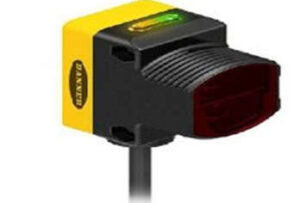- RADAR, which stands for “Radio Detection and Ranging,” is a microwave GHz active transmission and reception technique. Radar sensors use electromagnetic waves to detect, track, and position one or more objects without physical contact.
- Microwave echo signals are converted into electrical signals by radar sensors, which are conversion tools. They identify the position, shape, motion characteristics, and motion trajectory of the object using wireless sensor technologies to detect motion.
- By utilizing multiple transmission and receptions, ultra-wideband technology, millimeter-wave, signal processing technology, integrated circuits with increasing computing capabilities, etc., radar’s power consumption and size have been significantly reduced and its function is becoming stronger.
- At the moment, semiconductor technology is developing quickly. While we utilize a radar sensor every day to provide weather forecasts, resource surveys, traffic control, etc., traditional radar is widely used in shipborne, base radar, airborne, etc.
- The microwave echo signals are converted to electrical impulses using this sensor, which is a conversion device. The overview of a radar sensor’s operation is therefore covered in this article.
What is Radar Sensor?
- Microwave echo signals are converted into electrical signals by radar sensors, which are conversion tools. They identify the position, shape, motion characteristics, and motion trajectory of the object using wireless sensor technologies to detect motion. Radar sensors, unlike other types of sensors, are unaffected by light and darkness, and since they can recognize obstacles like glass, they can “see” through walls.
- Radar is harmless for people and animals and can detect farther distances than other sensor technologies like ultrasound.
- Radar sensors’ ability to detect motion and velocity above other types of sensors is one of its main advantages. An object’s speed and direction can be determined by a radar sensor by detecting the Doppler effect, or shift in wave frequency, that the object causes. Using multi-channel sensors also allows them to track the target’s movement from various angles.

- Complex movements are determined by looking at the movement from several angles and by using previously gathered measurements.
- Although employed in many different systems, CW Doppler and FMCW radar sensors make the most significant use of this radar technology.
- Doppler radars are specialized radars that measure a target’s speed over a range of distances using the Doppler effect. Additionally, a target’s distance is determined using FMCW radar sensors.
- The FMCW alters its frequency over time following the law of triangular waves, unlike the Doppler Radar.
- How are radar sensors employed now that we are aware of their operation?
- Although we discussed a few instances before, radar sensor technology is employed in a wide range of applications, including traffic control, medical equipment, and even military activities like missile guidance.
Working Principle of Radar Sensor
- A radar sensor’s basic operation is to determine an object’s direction and speed by detecting the Doppler Effect, which is a shift in frequency wave.
- Fundamentally, RADAR is an electromagnetic sensor that finds and locates objects.
- The radar emits radio waves into the vacuum of space. Reflecting objects will catch some of the radio signals (targets).
- The radio waves that are intercepted and reach the target are reflected in many different ways. The radar receives and amplifies some of the radio waves (echos) that are reflected off of it.
- Signal processing is used to determine whether or not a target echo signal has been picked up. The echo signal can then be used to determine the target location and other data.

- Below is a block diagram of a short-range, wideband automobile radar sensor operating at 24 GHz. A VCO, PRF (pulse repetition frequency), LNA (low noise amplifier), DSP (digital signal processing), and two antennas are shown in this circuit diagram.
![]()
VCO
- The word VCO stands for the voltage-controlled oscillator, which is used to generate an o/p signal for an input signal above a tolerable frequency range whose frequency changes with the magnitude of voltage.
Splitter of power
- To split the power and divide a single RF line into many lines, utilize a power splitter or power divider.
Amplifier in Power
- A signal’s power can be changed from low to high using a power amplifier.
SP (Signal Processing)
- Modifying, generating, and interpreting signals including images, sounds, and scientific measurements are the main goals of signal processing.
PRF (Pulse Repetition Frequency)
- The number of pulses of a repeating signal within a given unit of time, often measured in pulses per second, is known as the pulse repetition frequency.
Mixer
- Both the applied frequencies’ sum and difference are generated using the mixer. The difference in frequencies will therefore be of the IF (Intermediate Frequency) type.
LNA (Low Noise Amplifier)
- It is used to boost the weak RF signal, which is then picked up by an antenna. The output of this amplifier can be linked to the mixer.
Antennas
- The transmit channels in this system are primarily utilized to drive various antennas and also offer beam direction capabilities. The system also has reception channels. Because there is a phase difference between signals received by various receive antennas, several receive channels supply the angular information on the target.
Application of Radar Sensor
- When detecting vehicles or preventing collisions with moving machinery, radar sensors are utilized. Trucks, trains, autos, toll gates, railways, shipping canals, etc. are the most common types of vehicles that can be detected.
- Ports, manufacturing, low-visibility factory settings, and onboard mobile equipment all require collision prevention.
- Military
- Security system
- Automotive electrons
- Intelligent traffic radar
- UAV radar
- Intelligent lighting
- Industrial control
- Medical treatment
- Sports
